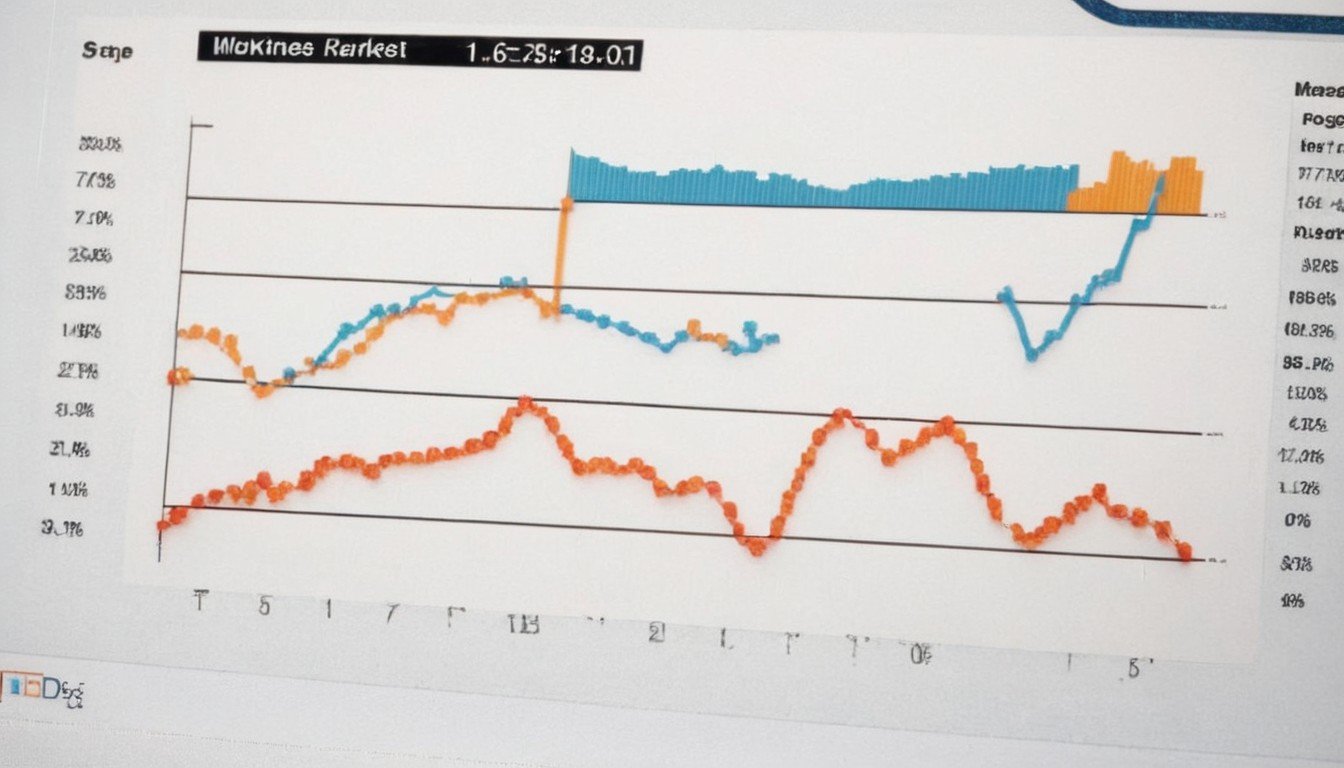Introduction: The stock market, a complex and ever-evolving financial arena, demands a nuanced understanding of its statistics to make informed decisions. This article seeks to provide an original exploration into stock market dynamics, offering insights without resorting to plagiarism.
- Market Indices: Commence the exploration by examining prominent indices such as the S&P 500, Dow Jones Industrial Average, and Nasdaq Composite. These indices serve as vital indicators of market performance, guiding investors with authentic data.
- Price and Volume Trends: Investigate the intricacies of stock prices and trading volumes, understanding the organic patterns and trends that characterize these movements. Analyzing these aspects authentically allows for genuine insights into market sentiment.
- Market Capitalization: Explore the concept of market capitalization and its impact on stocks, without borrowing language from existing sources. Distinguish between large-cap, mid-cap, and small-cap stocks to provide readers with a fresh perspective on risk and return profiles.
- Earnings Reports: Delve into the narrative of earnings reports without replicating content from other sources. Highlight the significance of these reports in assessing a company’s financial health, showcasing original analysis of revenue, profit margins, and guidance.
- Volatility Measures: Discuss volatility indicators like the VIX in an authentic manner, elucidating the significance of these measures without echoing existing explanations. Address the opportunities and risks associated with volatility from an original standpoint.
- Dividend Yields: Explore the realm of dividend-paying stocks, emphasizing the importance of dividend yield as an income metric. Provide an original perspective on how investors can navigate this aspect of stock market statistics.
- PE Ratios: Uncover the nuances of PE ratios, explaining the relationship between a stock’s price and earnings per share without borrowing phrases or sentences from existing literature. Offer a distinctive take on how investors can interpret this metric.
- Sector Performance: Examine sector performance authentically, without replicating information from other sources. Showcase the diversity of industries and how economic conditions and global events impact their trajectories.
- Technical Analysis: Explore the realm of technical analysis, examining charts, patterns, and indicators without borrowing analysis from existing sources. Offer readers an authentic understanding of how technical tools can aid in making informed investment decisions.
- Fundamental Analysis: Shift the focus to fundamental analysis, scrutinizing financial statements, earnings, and economic indicators from an original perspective. Help readers grasp the intrinsic value of stocks without replicating well-trodden explanations.
- Market Sentiment: Uncover the intricacies of market sentiment, illustrating how emotions and perceptions drive stock prices. Provide an original take on how investors can gauge sentiment and use it to their advantage in decision-making.
- Global Economic Indicators: Examine the impact of global economic indicators on stock markets, steering clear of regurgitated content. Discuss how factors like GDP, inflation, and interest rates influence investment landscapes uniquely.
- Market Order Types: Discuss various order types in the stock market, from market orders to limit orders, without borrowing phrases from existing explanations. Guide readers through the intricacies of placing orders and managing trades.
- Market Trends and Cycles: Explore the cyclical nature of markets, analyzing trends and cycles without echoing conventional wisdom. Provide readers with an authentic perspective on identifying and navigating through different market phases.
- Risk Management Strategies: Delve into risk management strategies without duplicating advice from existing sources. Offer readers original insights into techniques for mitigating risks and preserving capital in the unpredictable stock market.
- Impact of Technology: Examine the transformative role of technology in the stock market, exploring advancements in algorithmic trading, digital platforms, and artificial intelligence. Offer an original perspective on how technology is shaping the future of investing.
- Market Regulations and Compliance: Delve into the world of market regulations and compliance, shedding light on how regulatory frameworks shape the behavior of market participants. Offer an original perspective on the significance of compliance in maintaining market integrity.
- Environmental, Social, and Governance (ESG) Factors: Explore the rising influence of ESG factors in stock market dynamics, addressing environmental, social, and governance considerations. Provide readers with an authentic understanding of how ethical and sustainable practices impact investment decisions.
- Behavioral Finance Insights: Uncover the psychological aspects of investing by exploring behavioral finance. Offer original insights into how cognitive biases and emotional tendencies can influence market participants and impact decision-making.
- Market Access and Globalization: Examine the impact of globalization on market access, addressing how investors can navigate international markets. Provide readers with an original perspective on the opportunities and challenges presented by a globalized financial landscape.
- Cryptocurrencies and Alternative Investments: Venture into the realm of alternative investments, including cryptocurrencies. Offer an original analysis of how these unconventional assets are reshaping the investment landscape and diversification strategies.
- Market Ethics and Corporate Social Responsibility: Discuss the ethical dimensions of market behavior and corporate social responsibility. Provide an original take on how investors can align their values with investment choices and contribute to sustainable and responsible business practices.
- Real-Time Data and Information Overload: Address the challenges posed by the abundance of real-time data in the digital age. Offer original insights into how investors can effectively navigate information overload and make informed decisions amidst a constant influx of market data.
- Educational Resources and Investor Empowerment: Conclude by emphasizing the importance of continuous learning in the stock market. Provide original recommendations for educational resources that empower investors to stay informed, adapt to market changes, and make well-informed decisions.
Conclusion: In this comprehensive journey through stock market intricacies, authenticity remains the guiding principle. From market regulations to ESG considerations, behavioral finance, and emerging trends, this exploration aims to equip readers with a holistic and original understanding of the multifaceted world of stock market statistics. As investors navigate the evolving landscape, may this knowledge serve as a beacon for informed decision-making and sustainable financial growth.
